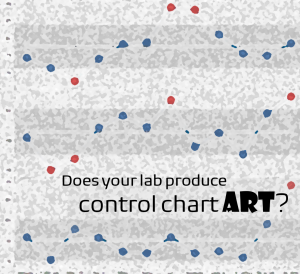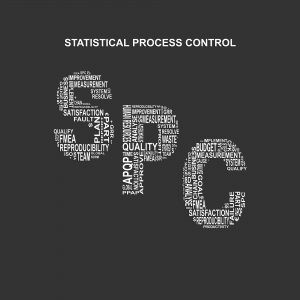LIMS in Production: Using Statistical Process Control to Avoid Manufacturing Challenges
 In the world of sample analysis, control charts tend to reign supreme – and the petroleum industry is no exception. Over the years, we’ve visited quite a few process control labs with bulletin boards covered in beautiful multi-colored control charts.
In the world of sample analysis, control charts tend to reign supreme – and the petroleum industry is no exception. Over the years, we’ve visited quite a few process control labs with bulletin boards covered in beautiful multi-colored control charts.
Earlier in my career, I was doing quality review for a major oil company’s contract laboratory. The lab was performing environmental testing for spill remediation around some of their captive gas stations.
The engineers had made a change in their remediation procedures, and found that their new cheaper procedure was performing about 10% better than the old procedure. Everyone’s happy, right?
But as a part of due diligence, I conducted a laboratory audit. During the audit I reviewed their beautiful multi-colored control charts that were updated on a weekly basis.
The control charts clearly demonstrated that there was actually a 20% increase in the remediation parameters they were monitoring, rather than a 10% decrease. The remediation program had to re-evaluate whether the new procedures were really as good as the older, more expensive procedure (they weren’t) and their remediation program was set back about 6 months.
The moral of the story? Had the lab and engineers been monitoring the trends in their control charts, they would have caught the problem sooner.
So what’s a control chart?
According to quality organization ASQ:
“The control chart is a graph used to study how a process changes over time. Data are plotted in time order. A control chart always has a central line for the average, an upper line for the upper control limit, and a lower line for the lower control limit. These lines are determined from historical data. By comparing current data to these lines, you can draw conclusions about whether the process variation is consistent (in control) or is unpredictable (out of control).”
 Control charts are the most visible part of Statistical Process Control (SPC), a quality control approach which uses statistical analysis to monitor and control processes. The underlying assumption of Statistical Process Control is that variation in most analytical methods is normally distributed around a mean value, which can be accurately calculated based on valid historical data.
Control charts are the most visible part of Statistical Process Control (SPC), a quality control approach which uses statistical analysis to monitor and control processes. The underlying assumption of Statistical Process Control is that variation in most analytical methods is normally distributed around a mean value, which can be accurately calculated based on valid historical data.
Managing Constant Variation in Analytical Measurement
So why do laboratories want to use statistical process control? What’s the deal with variation?
Variation matters because we’re surrounded by it. Random variations exist in any analytical measurement. When an analyst weighs a sample, balance accuracy may be affected by local vibration, variations in electrical power, temperature, humidity, and more. Volumetric glassware volumes can change (albeit very slightly) when temperatures deviate from the standard. An analyst using a microliter syringe likely draws a slightly different volume of sample into the syringe each time the task is performed.
Labs strive to minimize these variations, often going to great lengths (and expense) to control the environment. But some element of variation will be always be present.
For SPC, this variation determines the standard deviation (or sigma value) which is used to identify the control limits for a control chart. And while there are variations in the way data is used in various types of control charts (Individuals Chart, EWMA, Moving Range Chart, RPercent Chart), all of them require a measurement of variation and mean. This is what allows an evaluation of current data based on the past results.
 Specifications vs. Statistical Process Control
Specifications vs. Statistical Process Control
Quality analysts tend to be most familiar with specifications. Specifications define hard limits – indicating whether a product is In Spec, Lower Out of Spec or Upper Out of Spec.
With specifications, evaluation of results is based strictly on a single value. The history of previous values isn’t taken into consideration at all. And while they are valuable, specs can’t identify trends impacting data quality.
Using SPC to Detect Manufacturing Problems Faster
SPC, on the other hand, uses a ‘look-back evaluation’ of the data in order to identify trends. Statistical Process Control can identify problems earlier than monitoring specifications by themselves.
Think about a lab instrument for which the response for a given parameter is gradually decreasing. Since, with SPC, the assumption is that results will vary randomly around a mean value, a decreasing response over time would not be expected. Such a situation would likely persist for a much longer period of time with static process control. This is SPC’s strength: identifying statistically unlikely results.
By identifying and alerting the appropriate team members to deviations from standard operating conditions, your lab has the ability to predict and minimize problems faster.
LabVantage SPC: More Than Just a Control Chart
LabVantage manages Statistical Process Control and control charts with our SPC module. We know that control charts are great (and even pretty!). But sometimes it can be difficult to identify deviations visually from a control chart.
There are a few reasons why a series of values may be either above or below the historical mean. For example, process changes may be influencing results unexpectedly, or a lab may have switched standards and concentrations are significantly higher or lower than the previous standard. These factors – or unknown others – may be causing the measurement of the target analyte to be biased either high or low. In the LabVantage SPC component, 7 consecutive results that are less than the mean value triggers a trend violation which is immediately visible to the user – providing timely, critical warnings of potential testing problems to labs.
Want to learn more about this feature? Contact Software Point today!




